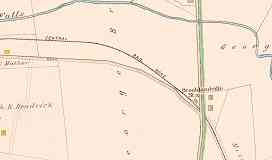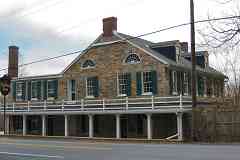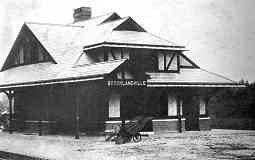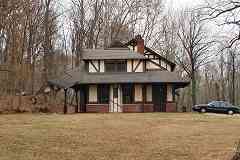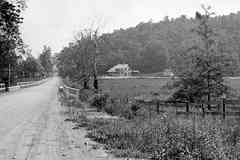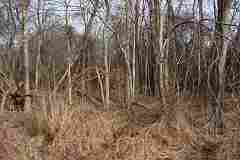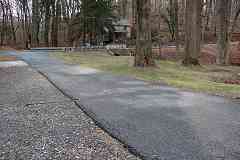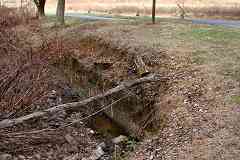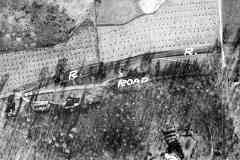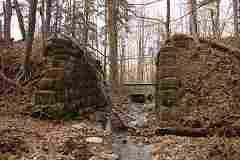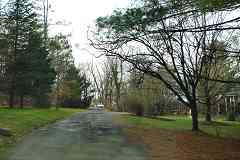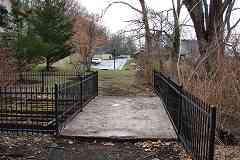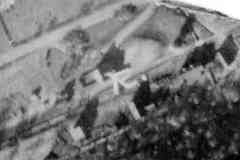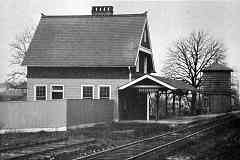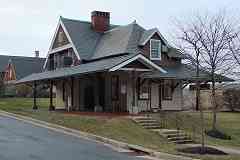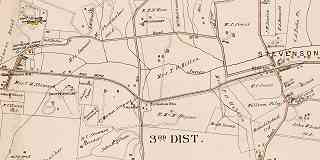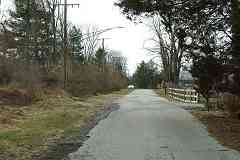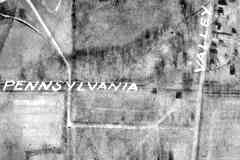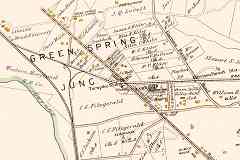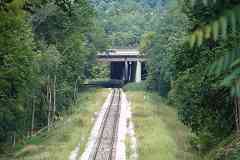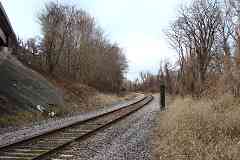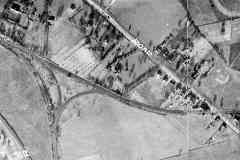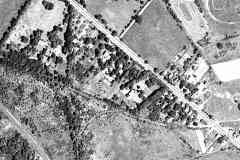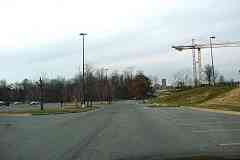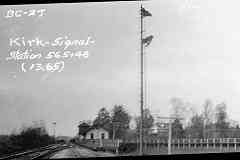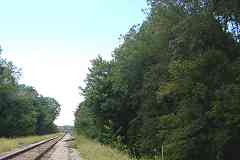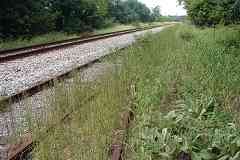|
The western leg of the wye appears to have been straightened twice,
with the final, and still-extant version, marked by R at the photo's
bottom-left corner. ROAD is Reisterstown Road.
The trolley line that largely paralleled WM and the GSB crossed each
other at Reisterstown Road. As is visible in the photo, the trolley's
double track ran along the north/east side of Reisterstown Road, but
switched to single track for the railroad crossing.
The structure casting a shadow inside the smallest of the wyes is JN Tower, built
1916 to oversee increased train activity: the Green Spring Branch handled traffic
rerouted around Baltimore's B&P Tunnel while that tunnel was being renovated.
For about a year, while only one of the tunnel's two tracks was in service, the
work forced some Pennsylvania RR Baltimore-to-Washington freight trains to
follow a route north out of Baltimore on NC, west on the Green Spring
Branch, south on WM to Walbrook Junction, then east to Fulton Junction
where they switched back to the PRR main line. This convoluted route added
over 20 miles to the usual 40 to Washington.
|

